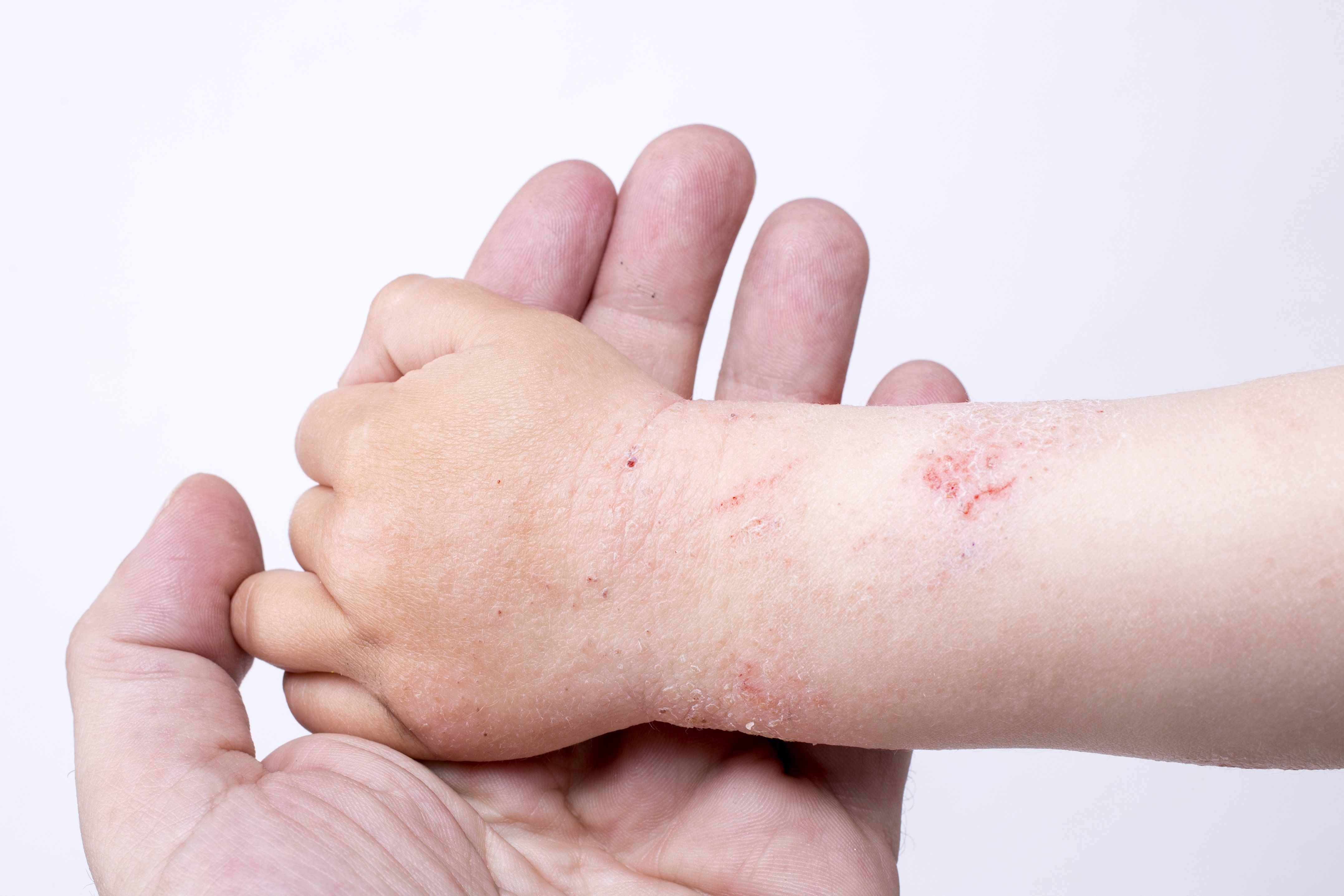- Case-Based Roundtable
- General Dermatology
- Eczema
- Chronic Hand Eczema
- Alopecia
- Aesthetics
- Vitiligo
- COVID-19
- Actinic Keratosis
- Precision Medicine and Biologics
- Rare Disease
- Wound Care
- Rosacea
- Psoriasis
- Psoriatic Arthritis
- Atopic Dermatitis
- Melasma
- NP and PA
- Skin Cancer
- Hidradenitis Suppurativa
- Drug Watch
- Pigmentary Disorders
- Acne
- Pediatric Dermatology
- Practice Management
- Prurigo Nodularis
- Buy-and-Bill
Publication
Article
Dermatology Times
Moisturizers offer easy, low-cost option for kids with atopic dermatitis
Author(s):
Anneke Andriessen, Ph.D. discusses research that suggests controlling symptoms with moisturizers can be an important - and inexpensive - prevention and treatment tactic for pediatric patients with atopic dermatitis.

Defects in the skin layer play a central role in the development of atopic dermatitis in children, and a new analysis indicates that controlling associated dry skin symptoms with moisturizers can be an important - and inexpensive - prevention and treatment tactic.
Atopic dermatitis is common in childhood, affecting between 10% to 20% of children. Among those who are prone, 90% develop the condition by age 5 with the initial phases emerging between three-to-six months of age. Symptoms, including dry skin, scaling, swelling and itching can lead to significant scratching and sleep disturbances, specifically among younger children and toddlers.
A working group of seasoned clinicians with experience managing pediatric populations with atopic dermatitis reviewed existing literature to identify the most effective interventions for controlling atopic dermatitis in infants and young children. They also examined the associated reactions to environmental triggers, climate and diet.
In that analysis, long-term use of moisturizers emerged as an efficient, easy, low-cost tactic for addressing the impact of the condition. The results indicated the use of plant-based moisturizers free of additives, fragrances, perfumes and sensitizing agents led to a number of benefits, including a prolonged time to flares, as well as a reduction in the number of flares and in the amount of topical corticosteroids required to achieve the same level of control over atopic dermatitis.
Consequently, it’s important to teach parents how to most effectively use moisturizers to alleviate and manage the signs of atopic dermatitis in their children, says group member Anneke Andriessen, Ph.D., a dermatologist with Radboud University Medical Center in the Netherlands.
“Prevention and management of atopic dermatitis hinge on parental education, preventive measures, treatment and control to improve the well-being of the child and the family,” she says. “Important aspects of atopic dermatitis treatment include parental education, avoidance of triggering factors and daily application of moisturizers.”
Training parents to effectively avoid triggers and use moisturizers from birth, she adds, could change how they approach dealing with allergens. Rather than avoiding exposures altogether, pairing a controlled exposure with moisturizer use could help prompt allergen tolerance. Doing so could ultimately lead to creating a therapeutic strategy for preventing allergy, focusing on safe skin treatment, oral tolerance induction and environmental controls, such as lifestyle changes. In addition, successful use of moisturizers could also reduce a family’s out-of-pocket costs for prescription medications, over-the-counter treatments, physician visits and hospitalizations. It could also reduce work or school absenteeism, bolster productivity for both child and parent and augment quality of life.
MOISTURIZERS FOR PREVENTION
According to the team’s analysis, previous studies have revealed daily moisturizer use can prevent the development of atopic dermatitis. Existing controlled-trial research indicates that, among high-risk newborns, consistent moisturizer application prevented this condition in 32% of Japanese babies and in 50% of Anglo-American infants.
Additional research also bolstered these findings. Existing studies indicated twice-daily use of ceramide-containing moisturizers had significant potential in controlling atopic-dermatitis food sensitivities. This effect was seen in high-risk infants under age 1. Other investigations found frequent use of bath oils and facial moisturizers alleviated dry skin symptoms after six months in 75% of 6-week old children.
EFFECTS OF VARIOUS MOISTURIZERS
Although studies into the efficiency of various vegetable oils as moisturizers are limited, Dr. Andriessen says, published investigations point to the efficacy of virgin coconut oil and sunflower oil distillate in alleviating the symptoms and impacts of atopic dermatitis in children.
For example, one study demonstrated that topically applied virgin coconut oil was effective in reducing the effect of eczema and controlling the amount of water that evaporated from the skin; thereby reducing dry skin. Based on those results, investigators determined this moisturizer’s efficacy results from its anti-inflammatory activity.
Two other studies also examined the moisturizing properties of sunflower oil, particularly sunflower oil distillate. This substance was found to decrease inflammation, restore filaggrin expression, activate ceramides 3 and regulate kallikrein expression. As a result, a 2% sunflower oil distillate emollient prompted improvement in both skin conditions and atopic dermatitis symptoms in pediatric patients.
A related study also revealed use of a 2% sunflower oil distillate emollient led to a corticosteroid-sparing effect among patients who were also simultaneously being treated with topical corticosteroids every other day.
Ultimately, Dr. Andriessen says, these studies demonstrated that pediatric patients with atopic dermatitis achieve comparable improvement in their skin condition and in their quality of life when they use moisturizers as they do when they rely solely on topical corticosteroids.
“A defective epidermal skin barrier in atopic dermatitis may benefit from daily moisturizer use, which should start after birth, especially in those infants at risk for atopic dermatitis,” she says. “Sunflower oil distillate, as a component in a moisturizer, has exhibited clinical efficacy and safety when used in pediatric patients with atopic dermatitis.”







